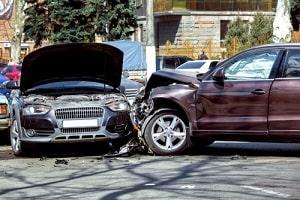121 S. Wilke Road, Suite 301, Arlington Heights, IL 60005
Home and Hospital Visits for Your Convenience
Serving Clients Across 7 Illinois Locations
Recent Blog Posts
Can I Sue if I Got Legionnaires’ Disease from a Hotel or Nursing Home?

Named after a 1976 outbreak at an American Legion meeting, Legionnaires’ disease is a type of bacterial pneumonia brought on by inhaling mist in the air that is contaminated with Legionella bacteria. This bacteria is typically carried through water systems and air conditioning ventilation systems, and according to the Centers for Disease Control and Prevention (CDC), it is deadly to 1 in 10 people who contract the disease. Diagnosis sometimes emerges following medical malpractice or due to building maintenance negligence by the property owner, especially in hotels, resorts, and long-term-care facility settings, which are common environments for outbreaks.
Modes of Transmission and Diagnosis
Unlike some conditions, Legionnaires’ disease is not transmitted from person to person, so it cannot be contracted from interacting with someone who carries the bacteria. However, the circumstances surrounding how you picked up the bacteria and how or when you were diagnosed can all make a significant difference in your case when it comes to pursuing compensation for the damage to your health and the expenses you incurred because of the disease.
What Are the Components of an Illinois Medical Malpractice Lawsuit?

If you believe you have suffered in some way due to the negligence of a medical professional, you might want to consider filing a medical malpractice claim. While these cases might be complex, especially depending on which types of accusations are being levied, the actual elements of a medical malpractice claim—the parties, the proof, and the process—are relatively straightforward. Below is a brief summary of each component.
The Parties
The parties involved in a medical practice claim and the terms used to describe these parties are as follows:
-
Plaintiff—This is the person bringing the medical malpractice claim against the defendant in court. In general, this could be:
-
The affected patient
-
A legal representative for the affected patient
-
The executor of the affected patient’s estate
Can I Pursue Compensation for a Legionnaires' Disease Infection?
 Although many people may have heard of Legionnaires' disease, they may not know that it is a severe form of pneumonia. In many cases, it is possible that the disease could have been prevented. If you or someone you love has been diagnosed with the condition, you and your family may be entitled to compensation. In some cases, the misdiagnosis of this disease may even be the result of medical malpractice. Typically contracted through the inhalation of contaminated mist, the condition can be fatal, especially in those with compromised immune systems or certain lung conditions. Victims and their families may be able to pursue compensation for a Legionnaires' disease infection through a personal injury or wrongful death lawsuit.
Although many people may have heard of Legionnaires' disease, they may not know that it is a severe form of pneumonia. In many cases, it is possible that the disease could have been prevented. If you or someone you love has been diagnosed with the condition, you and your family may be entitled to compensation. In some cases, the misdiagnosis of this disease may even be the result of medical malpractice. Typically contracted through the inhalation of contaminated mist, the condition can be fatal, especially in those with compromised immune systems or certain lung conditions. Victims and their families may be able to pursue compensation for a Legionnaires' disease infection through a personal injury or wrongful death lawsuit.
How to Recognize Soft Tissue Injuries After an Illinois Car Crash

Soft tissue injuries are some of the most common injuries that can occur in car accidents. If you have been the victim of a vehicle collision, it is important to not ignore sprains and strains or dismiss them as minor injuries. Additionally, it is helpful to familiarize yourself with how to increase your chances of receiving fair compensation for any losses that you or your loved ones have experienced in a crash caused by a negligent driver.
What Is a Soft Tissue Injury?
Soft tissue injuries are caused by a sudden, uncontrolled overextension of muscles. Such injuries typically occur in crashes because of the jarring motion of a collision or because a part of the body became entrapped. Injuries like these are classified as either sprains or strains. Strains are injuries to the ligaments, while sprains are injuries to either the tendons or the muscles themselves.
5 Common Types of Car Accident Injuries in Illinois

Although a wide range of injuries may occur in an auto accident, some are more common than others. Several factors can impact the severity of these injuries, including the speed at the time of impact, seatbelt use, and deployment of airbags. Read on to gain a better understanding of these injuries, their estimated healing time, and how to obtain fair compensation for the pain and suffering they have caused you and your family.
- Head Injuries - Damage to the head can vary from lacerations and contusions to major concussions and traumatic brain injuries (TBIs). Victims may bump their heads on the door or suffer cuts from loose objects in the vehicle, or their brains may suffer a strong jarring upon impact. The healing time for these injuries can vary significantly, ranging anywhere from a few days to several years. In some cases, the effects of an injury may be permanent, and they may include memory loss, seizures, or mood disorders.
Side-Impact Car Crashes Can Have Devastating Consequences for Victims

Side-impact crashes, otherwise known as T-bone or broadside car accidents, can be devastating for a vehicle's driver and passengers. In fact, researchers from the Monash University Accident Research Center determined that these crashes were more likely to result in death, killing between 8,000 and 10,000 people annually. Even more alarming is the fact that severe or fatal injuries can occur at speeds as slow as 30 miles per hour. For those who have been injured or whose relatives have been killed in a T-bone crash, it is important to understand the importance of filing a personal injury claim, as it may increase the odds of a fair and favorable settlement.
The Potential Aftermath of a Side-Impact Crash
In a front or rear crash, vehicle’s seat belts and airbags usually minimize the impact for any front-seat passengers. Unless the vehicle is equipped with side airbags, this is rarely the case in a T-bone crash. Victims may be thrown against the door of their vehicle, which can result in head injuries and fractures. The vehicle door may also crush in toward the victim, which can cause fractures, compartment syndrome, lacerations, and other serious injuries.
Tips for Dealing With Medical Bills After an Illinois Car Accident

Car crash victims sometimes sustain injuries that require them to seek medical treatment. Of course, this care does come at a cost. Who is responsible for these losses, and what can victims do to ensure their medical expenses are covered? Depending on the circumstances that led to your car accident, the other driver may be responsible for the cost of your medical bills. An investigation may be required to determine who is at fault. If the other driver was deemed responsible for the collision, then the liability for your losses (including medical expenses) will most likely rest with that negligent motorist.
Covering Your Medical Expenses
Unfortunately, it can take time to recover compensation after your accident. If you need ongoing medical treatment, that wait could compromise your health. To ensure continuity of treatment, you may need to initially cover the costs yourself. If you have health insurance, you can file a claim while paying any co-pays or other related expenses. Alternatively, you may be able to file a claim under your auto insurance policy to make sure your medical expenses are covered while you await your personal injury settlement.
5 Symptoms That May Point to a Concussion Injury After a Car Accident

As is true in many cases involving injuries, it is not uncommon to think you are okay immediately after a car accident, apart from feeling shaken up by the impact. During these critical moments, you may not sense that there is anything wrong, as your perception of pain can be naturally subdued by the shock and adrenaline rush your mind and body have experienced in the collision. This is true for both minor and major car crashes. When you are stunned from a collision, it can take some time to sense the presence of any injuries. However, it is essential that you see a medical professional sooner rather than later so you can begin the recovery process. It is also important to talk to an experienced personal injury lawyer who can determine liability for your accident and help you seek damages.
Signs of Concussion Can Sometimes Be Overlooked
Recognizing the Symptoms of Compartment Syndrome After a Car Accident

Aches and pains after a vehicle collision are normal, since your body has absorbed a significant amount of force from the impact. However, in some cases, this soreness is caused by more than just minor muscle injuries, and it may indicate a more troublesome condition, known as compartment syndrome. This is an ailment in which pressure builds inside the muscle compartments. If left untreated, it can begin to cut off blood flow to the affected area, resulting in serious complications. Such injuries are usually seen in the legs, but they can also occur in the hands, arms, or feet. Compartment syndrome may be either chronic or acute; most cases resulting from an auto accident are acute, which can be more dangerous.
Warning Signs of Compartment Syndrome
How do you determine if your injuries are typical or something more serious? Look for these signs and symptoms of compartment syndrome:
3 Types of Car Accident Injuries With Devastating Health Effects

One of the most common questions drivers or passengers struggle with when they are hurt in a car accident is whether their injuries are considered serious, or if they should be concerned about their long-term health. In many cases, when people have a headache or some aches or pains for a few days following an accident, they are tempted to brush the symptoms off with the hopeful assumption that they will soon be on the mend. However, severe and minor injuries alike can be tricky to assess, as some are subtle at first and then gradually worsen over time, while others are immediately noticeable.
Injuries That May Result in Long-Term Damage
While some car crash injuries are thankfully minor or temporary, others end up being catastrophic personal injuries that alter our lives forever. A few examples of such devastating injuries include:

 Spanish
Spanish Cantonese
Cantonese




















